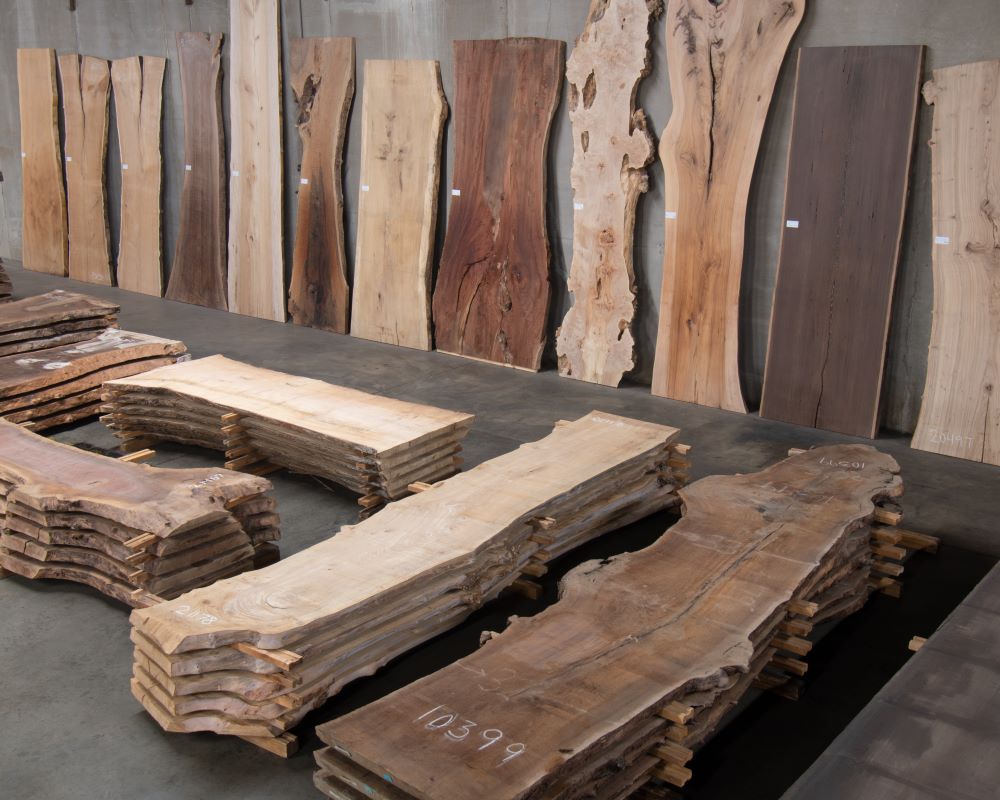When investing in high-quality specialty wood from a trusted, family-owned business like CS Woods, it’s reasonable to want assurance that your premium wood product won’t succumb to warping or rapid deterioration.
One common concern regarding wood products is whether dried wood can be warped back into its original shape if things go wrong. This brings into question whether warped wood can be straightened at all. Today, we’re answering all your burning questions about wood warping, including what causes wood warping and how CS Woods prevents it.
Understanding Wood Warping
What is Wood Warping?
Let’s start off by clarifying what we mean by “warping”. When we talk about warping in dried woods, we’re referring to unwanted bends or twists. Warped wood is wood that has deviated from its desired flat shape. This deviation can occur in several forms, including bowing, cupping, and twisting.

How Does Wood-Warping Happen?
Common Causes of Warped Wood
The behavior and characteristics of wood vary depending on how the cells are aligned. Longitudinal orientation runs up and down the tree. Because the long hollow lumens of the cells are oriented in this direction water can move in lumber much faster in the longitudinal direction than in other directions. Radial cells conduct fluids from the heart to the sapwood including sugars and starches which can cause staining. Tangential direction follows the annual rings when viewing the end of a log. Moisture movement here is slower and tangential shrinkage is a big contributor to warping problems.
Warping happens when different parts of the wood change shape at different rates, often due to imprecise sawing, uneven moisture levels or temperature changes. Factors such as improper drying processes or fluctuating environmental conditions can lead the fibers within the wood to shift unevenly, resulting in a piece that’s less than ideal for your specialty wood project needs.
1. Moisture imbalance
One of the primary culprits behind warped wood is uneven moisture levels. Wood is hygroscopic, meaning it absorbs and releases moisture from the air. When one side of a wood board loses moisture faster than the other, it can shrink unevenly, leading to warping. At CS Woods we ensure that the moisture content of your wood is optimal for your specific project and environment. Click here to read about how we Facetime our customers to show moisture meters.
Example: Imagine a wooden plank left in a damp basement. The side exposed to the air loses moisture, while the side in contact with the floor remains wet. This imbalance causes wood to cup or bow.
2. Improper Drying Techniques
The way wood is dried significantly affects its stability. Improper drying methods can leave internal stresses within the woods, making it more prone to warping. There are two primary drying methods: air-drying and kiln-drying.
Example: Air-drying wood is a natural process that can take several months or years, while kiln-drying uses controlled heat and humidity to expedite the process. If the wood is not dried evenly or too quickly, it can develop internal stresses that lead to warping.
3. Wood Grain Orientation
The orientation of the wood grain greatly impacts its stability. The direction of the grain affects how the wood reacts to changes in moisture and temperature. Tangential shrinkage is a big factor here and what we call “jacket boards” are responsible for many tabletops and bar tops cupping and warping.
Example: A tabletop or long bar top made from boards from the outside of the boule, near the bark, can warp dramatically due to internal tension.
4. Temperature Fluctuations
Wood is sensitive to temperature changes. Fluctuations in temperature can cause the wood fibers to expand and contract, leading to warping. This is true for outdoor furniture, which is exposed to varying weather conditions. Wood used inside the home is subject to seasonal heating and cooling and sunlight coming in through windows
Example: An outdoor wooden bench that experiences hot summers and cold winters can warp as the wood expands and contracts with the changing temperatures. If the wood wasn’t properly dried to begin with the joinery can fail and the wood can shrink away from the hardware used causing it to loosen.
5. Inadequate Sealing
Properly sealing wood can help prevent moisture infiltration. Sealing creates a protective barrier that helps maintain a consistent moisture level within the wood. Without adequate sealing, wood is more susceptible to absorbing moisture from the environment, leading to warping.
Example: Using finishes like natural oil, varnish or polyurethane can seal the wood and protect it from moisture. A carefully applied finish to all the exposed wood surfaces is essential. That means the bottom and sides of tabletops and counters must be sealed, even if they will not be seen.
6. Type and Quality of Wood
Different types of wood have varying susceptibilities to warping based on their density and structure. Hardwoods and softwoods behave differently when exposed to moisture and temperature changes.
Example: Hardwoods like walnut, oak and maple are denser and more stable than softwoods like pine and cedar.
Tips for How to Prevent Wood Warping
Preventing wood warping requires a combination of proper storage, drying, and woodworking techniques. Here are some practical tips to help you avoid common causes of warping:
- Store wood correctly. Keep wood in a controlled environment with consistent humidity levels. Avoid storing wood in damp basements or areas prone to temperature fluctuations. Use stickers to separate boards and keep wood off the floor or ground.
- Use proper drying methods. Ensure wood is dried evenly and thoroughly. Consider using kiln-dried wood for its stability and reduced risk of internal stresses.
- Choose quality materials. Select wood with straight grain and minimal defects.
- Seal wood properly. Apply finishes like varnish or polyurethane evenly and ensure all sides of the wood are sealed to prevent moisture infiltration.
- Control environmental conditions. For outdoor furniture, use weather-resistant finishes and consider covering or storing items during extreme weather conditions.
Is it possible to warp dried wood back into its original shape?
The challenge of reversing warped wood
The short answer? Not really. Once dried wood has become significantly warped due to moisture imbalance or other factors, reversing this process is not possible. The changes that occur within the cellular structure when the fiber orientation shifts are permanent.
We’ve heard of some techniques out there, like applying heat and moisture followed by clamping, or applying heavy weights,but they come with limitations and risks. These methods may occasionally work on minor bends but are unlikely effective over the long haul.
That’s why it’s crucial to invest in premium wood that has been properly dried. The best approach is to prevent wood-warping altogether, because once it happens, it’s too late.
How CS Woods Prevents Wood Warping
The Drying Process
CS Woods takes a meticulous approach to drying wood, ensuring that each piece is dried evenly and thoroughly to prevent warping. This process includes:
- Controlled environments
- Using state-of-the-art drying facilities to maintain consistent temperatures and humidity levels.
- Proper techniques
- CS Woods employs methods such as computer monitored kiln drying to ensure moisture content is evenly distributed throughout the wood.
- Gradual drying
- Allowing wood to acclimate slowly to avoid rapid moisture loss which can cause warping.
Quality Control Measures
CS Woods implements rigorous quality control measures at every stage of production to ensure a durable, high-quality product:
- Selection: Choosing only the best raw materials with minimal defects.
- Inspection: Conducting regular inspections to identify potential problems early in the processing stage.
- Proper Storage: All CS Woods slabs are stored under optimal Rocky Mountain Dry conditions for use in the driest regions in the country.
Why CS Woods Doesn’t Need to Reinforce Slabs
Traditional woodworking techniques use structural support for large surfaces but at CS Woods we cut all our table top slabs to at least 2 ½” thickness eliminating the need for support features leading to a more modern appearance.


